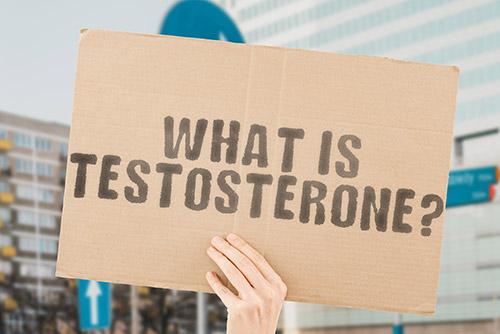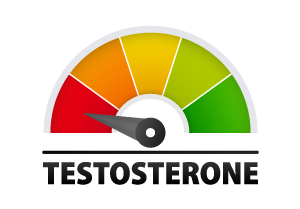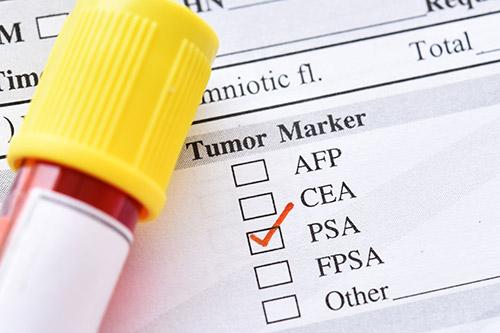What you need to know about high testosterone.
Published
What you need to know about high testosterone
- A high testosterone level is over 31nmol/L (900ng/dL) in men and over 1.8nmol/L (54ng/dL) in pre-menopausal women.
- Voice deepening, acne, hair growth and irregular periods are common symptoms of high testosterone in women.
- High testosterone in males is harder to spot but they may notice acne, high blood pressure, headaches and enlargement of the prostate.
- Polycystic ovarian syndrome (PCOS) is the commonest cause of high testosterone in women.
- Men with high testosterone are usually taking anabolic steroids or testosterone replacement.
- Take a testosterone blood test to know if you have a high testosterone level
High testosterone is a condition where the level of the male sex hormone (“androgen”) testosterone is higher than it should be. High testosterone is also known as hyperandrogenism. Although high testosterone can affect both males and females of any age, it’s actually most commonly a problem in women before the menopause.
In this article we’ll cover the symptoms of high testosterone, what causes it, how you can test for it and what you can do about it.
What is a high testosterone level?
In males, testosterone levels naturally decrease with age so the testosterone level considered high also decreases1.
| Age range | High total testosterone level |
| 18 - 39 | over 35 nmol/L (1000 ng/dL) |
| 40 - 59 | over 31 nmol/L (900 ng/dL) |
| ≥ 60 | over 25 nmol/l (720 ng/dL) |
In females, testosterone levels reduce with age and after the menopause so the level considered high depends on whether a woman is pre- or post-menopausal1.
| Age range | High total testosterone level |
| Pre-menopausal | over 1.8 nmol/L (54 ng/dL) |
| Post-menopausal | over 1.39 nmol/L (40 ng/dL) |
Signs of high testosterone in females
Excess body hair and acne are common signs of high testosterone in women.
Females actually have higher levels of testosterone than they do of oestrogen. Still, testosterone levels in females are only a tenth of the levels in males. Because, their baseline testosterone levels are lower, an increase in testosterone in females is often more noticeable than in men and can cause:
- Deepening of the voice
- Acne
- Excess body hair (hirsutism) - on the face, back and underarms for example
- Irregular periods
- Infertility
- Male-pattern baldness (androgenic alopecia)
Signs of high testosterone in males
Because males naturally have high testosterone levels, they have very few noticeable symptoms when their testosterone levels get higher than normal. If the level gets high enough, men with high testosterone may notice:
- Acne
- Headaches
- High blood pressure
- Infertility
- Mood swings, aggression
- Prostate enlargement - peeing at night, poor stream, difficulty starting
Causes of high testosterone in females
In women before the menopause, by far the commonest cause of high testosterone is a condition called polycystic ovarian syndrome or PCOS. In this condition, the ovaries produce more testosterone than normal. Although PCOS accounts for about 90% of the cases of high testosterone in women, there are other causes.
Causes of high testosterone in females include:
- PCOS
- Anabolic steroids
- Testosterone replacement
- Congenital adrenal hyperplasia
- Cushing syndrome
- Tumours in ovaries or adrenal glands that produce androgens
Causes of high testosterone in males
High testosterone levels in males are most commonly caused by taking testosterone replacement or using anabolic steroids.
Causes of high testosterone in males includes
- Anabolic steroid use
- Testosterone replacement
- Congenital adrenal hyperplasia
- Cushing syndrome
- Tumours in testes or adrenal glands that produce androgens
How to know if you have high testosterone
Even in women, high testosterone levels can be difficult to spot. Voice changes can be subtle and acne or facial may be considered normal. In men, high testosterone levels are even harder to diagnose. In both sexes, the only reliable way to know if you have high testosterone is to take a testosterone blood test.
If you think you might have high testosterone levels, you can order a simple at home blood test to check.
Check if you have high testosterone, order an at home test now
What can you do if your testosterone level is high?
If you’re found to have a high testosterone level, the treatment really depends on the cause.
So in women before the menopause, we typically need to treat their PCOS to lower the testosterone. This can involve lifestyle changes, medication to treat insulin resistance and contraceptive hormones that regulate the menstrual cycle and lower testosterone levels.
In women after the menopause and men, a high testosterone level is usually related to taking anabolic steroids or testosterone replacement. Ideally you don’t take anabolic steroids! And if your high testosterone level is related to testosterone replacement then you can adjust the dose to bring the testosterone level down.
Get tips on better health
Sign up to our emails on the better way to better health.
We'll keep you up-to-date with the latest research, expert articles and new ways to get more years of better health.







